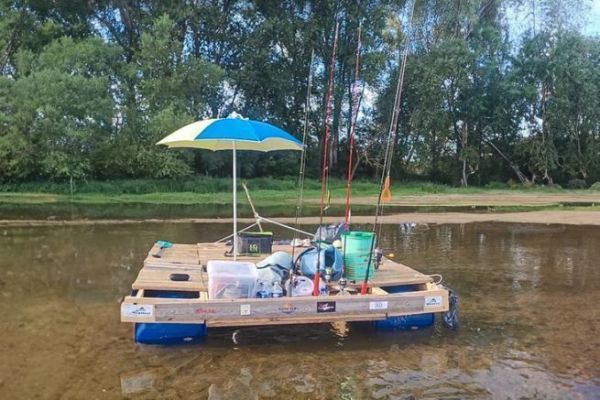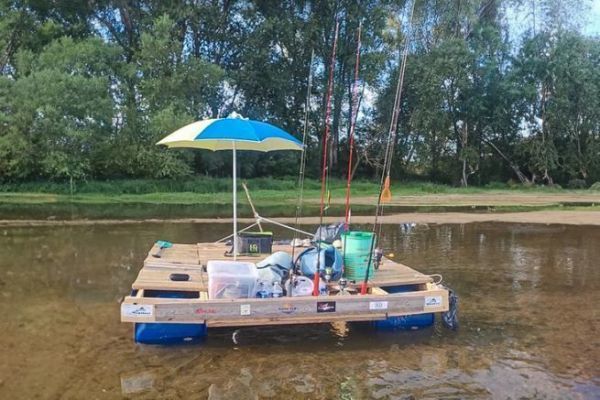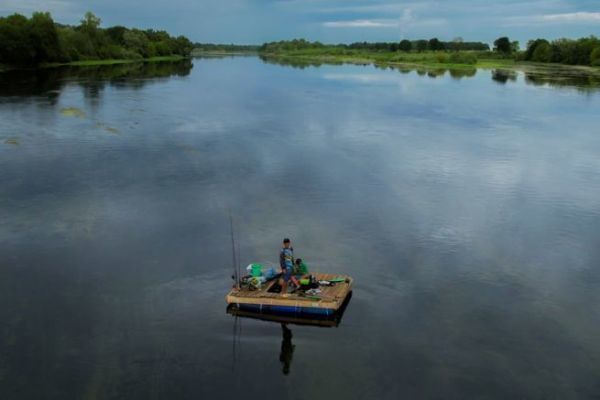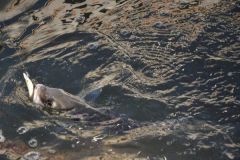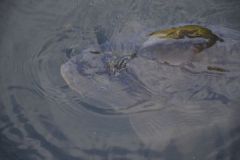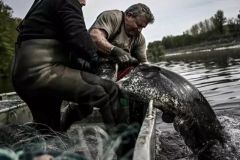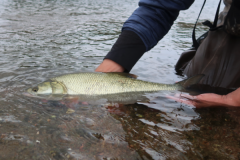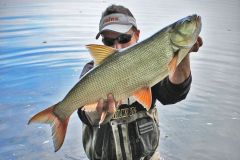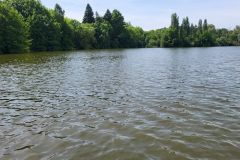Inspired by a few videos on the subject, such as the one available on the YouTube channel "The Other life", we embarked on probably one of our most exciting and incredible fishing sessions ever! In this first article, I present and detail the construction of the raft that was our home for a week.
Boat plans
The idea was to build a raft for two people. Our raft will be 3.30 m long and almost 2.50 m wide. Given its size, we decided to break it down into three parts:
- Two side sections act as floats
- A very massive central section, including a sort of hold, for storing all your gear (sleeping bags, tent, pillows, etc.)
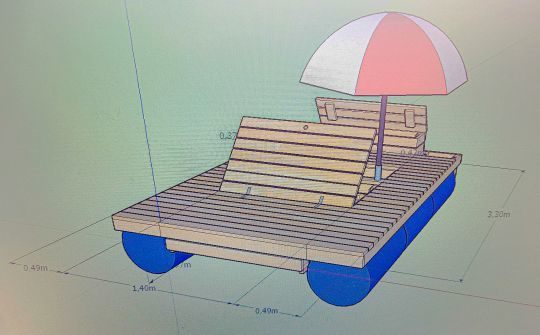
Recycled building materials
Firstly, to float our raft, we needed something sturdy. So we opted for 6 x 200-litre PVC drums, which we picked up at our garage. Originally, they contained coolant. To be on the safe side, we glued the caps with silicone to ensure a watertight seal.
Secondly, we needed wood - lots of it! For the most part, we used decking boards we'd been given. These boards have the advantage of being particularly resistant, but on the other hand, they are very heavy. In addition, we dismantled a few (untreated) pallets we'd found in supermarkets. All we had to do was buy 7 planks (4 m long) to build the structure!
Finally, the screws. Once again, we were able to salvage carpenter's brackets and hinges from a building site. All we had to do was buy the screws and a few threaded rods.
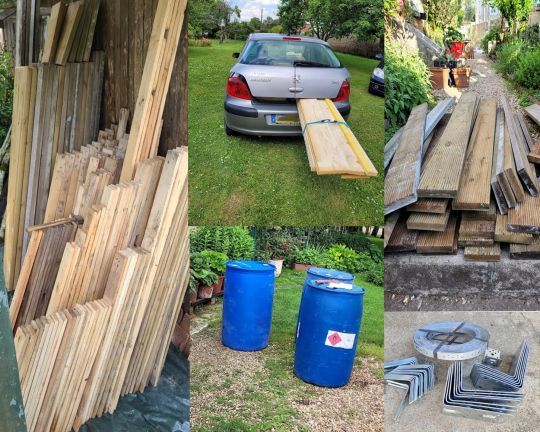
A little ingenuity and a lot of elbow grease
In all, construction took just over three full days. Having plans saved us precious time. As we'd wished, we built a bunker, which we waterproofed with plastic sheeting. This storage space came in incredibly handy throughout our drift, keeping everything dry. We also took the opportunity to build an open-air locker at the rear of the raft. Of course, we used it to store all our fishing gear!
We encountered a major problem during the construction phase. As the raft is made up of three parts, how could we securely fasten them together? In the end, we opted for thick threaded rods bolted to either side of the planks. This choice paid off, because while this was one of our major fears, we never had a problem!
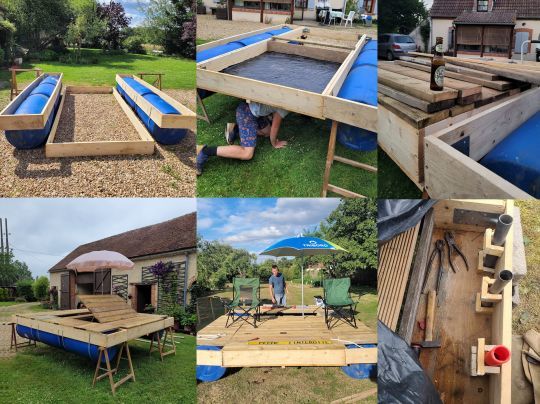
If we had to review one point
The main problem with this raft is its weight! Very solid, it won't have flinched throughout the drift. However, with this solidity comes a very heavy weight. We estimate that it weighed between 500 and 600 kg. Whether during assembly, disassembly or transportation, this didn't make our task any easier. If we were to make another centreboard with it, we'd probably fit it with castors. This would allow it to be quickly dismantled and reassembled during the drift, to facilitate the passage of certain obstacles.
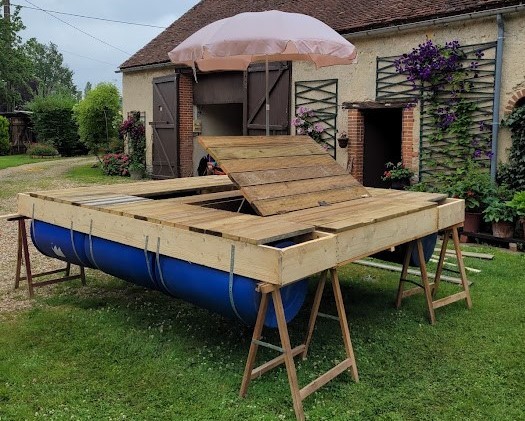
The rest of the adventure to come...

 /
/ 